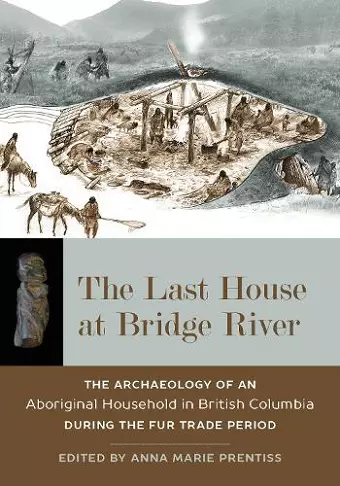The Last House at Bridge River
The Archaeology of an Aboriginal Household in British Columbia during the Fur Trade Period
Format:Hardback
Publisher:University of Utah Press,U.S.
Published:31st Aug '17
Currently unavailable, our supplier has not provided us a restock date

The Last House at Bridge River offers a comprehensive archaeological study of a single-house floor and roof deposit dated to approximately 1835–1858 C.E.Although the Fur Trade period of the nineteenth century was a time of significant change for aboriginal peoples in the Pacific Northwest, it is a period that is poorly understood. These studies of Housepit 54 at the Bridge River site offer new insights, revealing that ancestors of today’s St’át’imc people were actively engaged in maintaining traditional lifestyles and making the best of new opportunities for trade and intergroup interaction.
Among its major contributions, the book includes a first-ever historical ecology of the Middle Fraser Canyon that places aboriginal and Euro-Canadian history in ecological context. It demonstrates that an integrated multidisciplinary approach to archaeological research can achieve insights well beyond what is known from the ethnographic and historical records. Because the project derives from a long-term partnership between the University of Montana and the Bridge River Indian Band, it illustrates the value of collaborations between archaeologists and First Nations. Together, contributors present a Fur Trade period aboriginal society at a level of intimacy unparalleled elsewhere.
“An excellent, important research publication with scholarly significance in the fields of indigenous history, historical archaeology, and Plateau and Northwest Coast cultural studies. It provides a model for thorough, high-resolution excavation and analytical techniques.”
—Aron L. Crowell, Alaska director, Arctic Studies Center, Smithsonian Institution
“The archaeology of the Fur Trade era has been approached for the most part from a Eurocentric perspective, so this book provides an important counterpoint that should be widely publicized. It adds a lot of detail and new data to interior Salish enthnohistorical archaeology. The content is unique and illuminating.”
—Maria Nieves Zedeño, professor of anthropology, University of Arizona
—Alaska Journal of Anthropology “The premise of the volume is unique, and the collaboration of many scholars (along with the participation of the descendant community) allows for the contribution of diverse theoretical perspectives and interpretations…. The methodological breadth on display across the different chapters will be useful for students and professionals looking for analytical inspiration.”
—Pacific Northwest Quarterly
ISBN: 9781607815433
Dimensions: unknown
Weight: 780g
292 pages